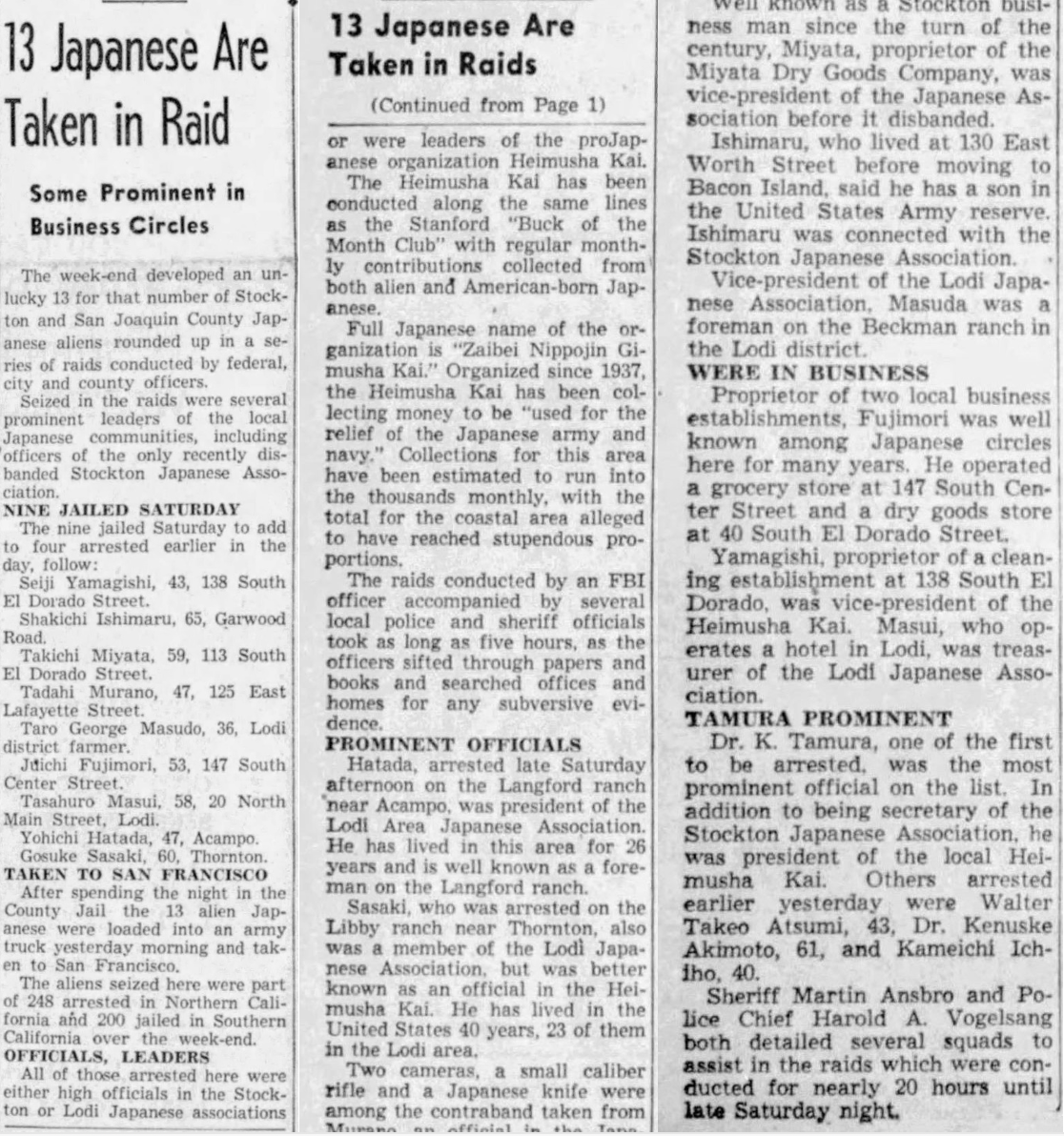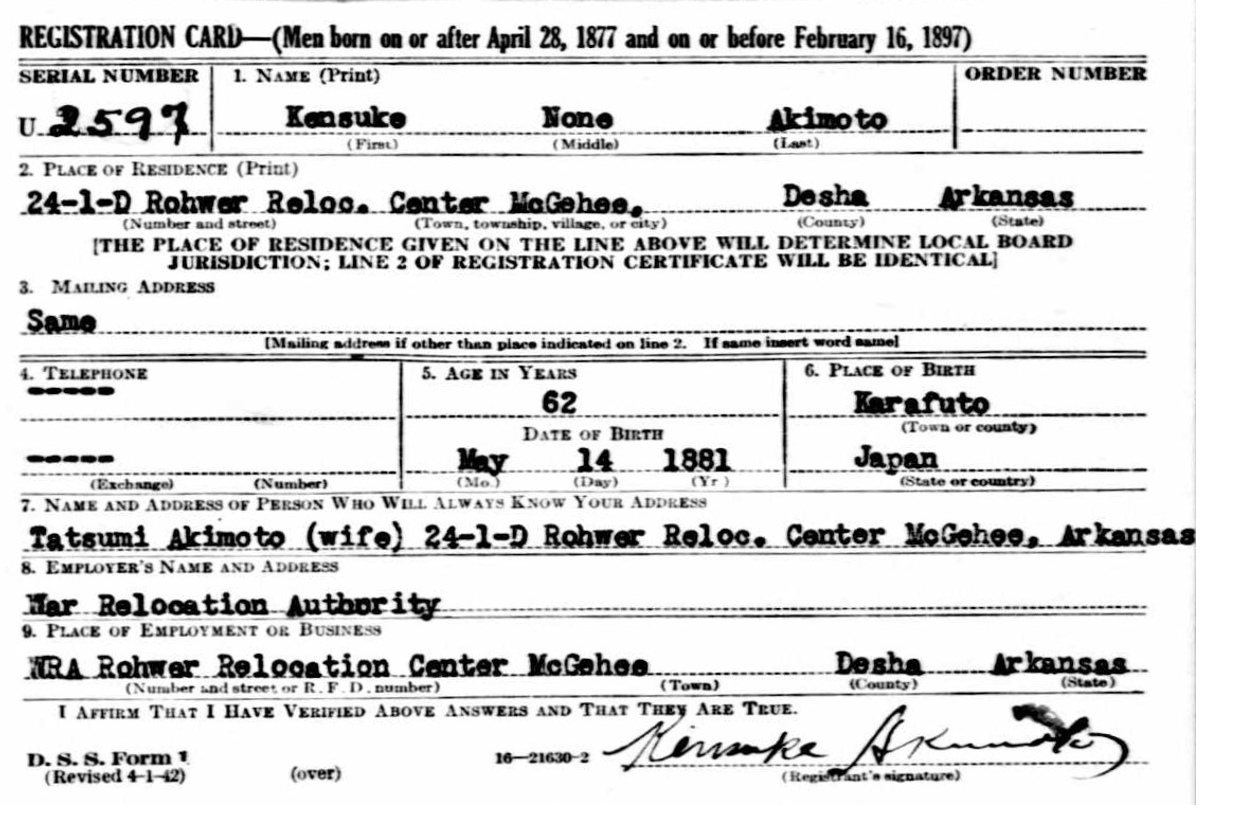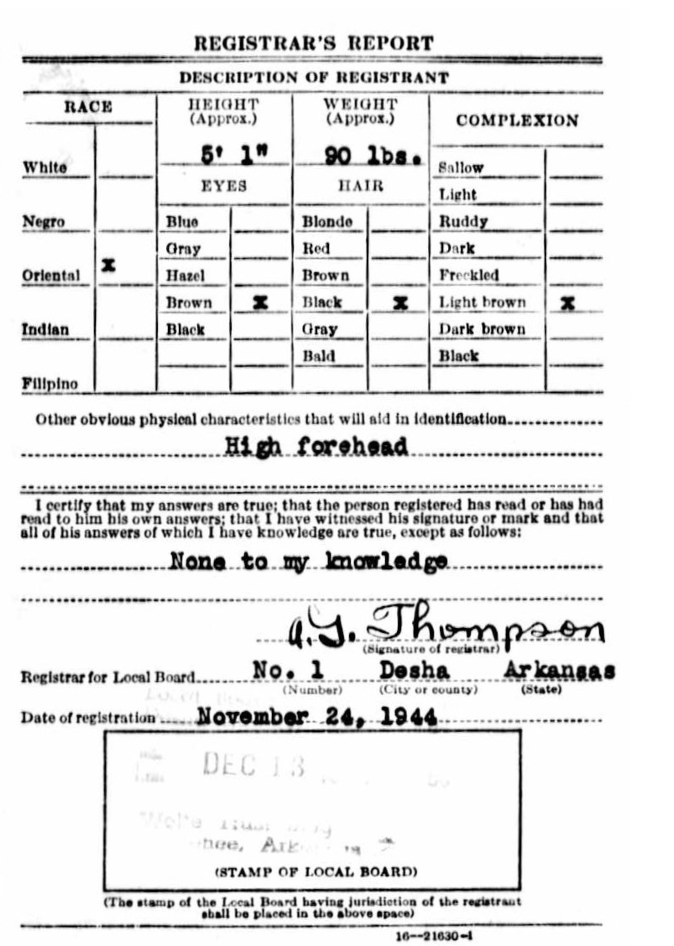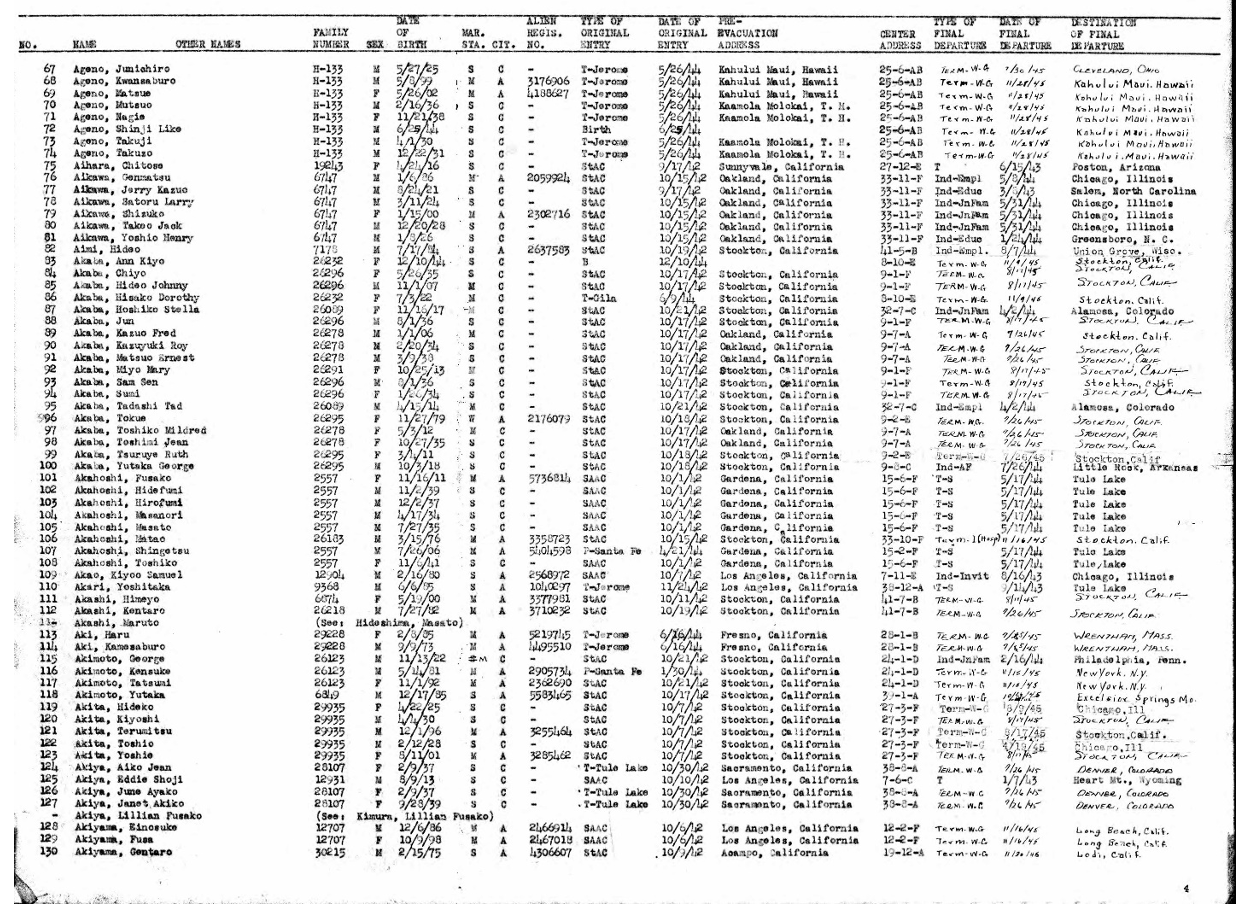The Museum will be closed January 12th - January 16th in preparation for our new Special Exhibition Ripley's Believe It or Not!. Museum reopens Saturday January 17th. New Exhibit opens January 31st!
On February 19, 1942, President Roosevelt, as commander-in-chief, issued Executive Order 9066, which led to the forced relocation of approximately 120,000 Japanese Americans living on the West Coast. More than two-thirds of these people were native born American citizens. They were confined in inland internment camps operated by the military.

 \
\
“Stockton Record” February 23, 1942 article reported about the “spy hunt” for Japanese Americans.

Among other prominent Japanese Americans 61 years old Dr. Kensuke Akimoto, father of George Akimoto was arrested and detained.


George Akimoto World War II Draft registration card was issued on June 30, 1942 and the Stockton Assembly Center is listed as his adress.
The Stockton Assembly Center was built on the site of the San Joaquin County Fairgrounds southeast of downtown Stockton. Inmates lived in newly constructed barracks located both within the fairgrounds racetrack and adjacent to it. Nearly its entire inmate population came from Stockton, Lodi and surrounding farming areas in San Joaquin County. The first advance inmate groups arrived on May 10, 1942, and the camp's peak population of 4,271 was reached just eleven days later. The camp remained in operation until October 17, 1942, making it one of the longest running of the assembly centers and resulting in a relatively more robust inmate-run educational program. Essentially the entire population of Stockton went to Rohwer, with a small number of tuberculosis patients and their families going instead to Gila River.

Family in front of barracks at Stockton Assembly Center in Stockton, California May 19, 1942. Densho Encyclopedia.
The camp newspaper was the “El Joaquin”, which generally appeared twice a week with six-page mimeographed issues on Wednesdays and Saturdays. The newspaper staff worked out of an office under the grandstand that included one typewriter and a mimeograph machine. In addition to general information about the camp, most issues included profiles of white staff, updates on other assembly centers, a variety of columns, two pages of sports news, and a cartoon featuring a bucktoothed, sombrero clad Nisei boy named Pancho, created by Art editor George Akimoto. There were thirty-four regular issues of the “El Joaquin”, along with a thirty-five-page final issue dated September 28, 1942.

“El Joaquin” final edition September 28, 1942 signed by George Akimoto as Geo. Akimoto. California Historical Society.
George Akimoto and his mother Tatsumi arrived at Rohwer internment camp from Stockton assembly center on October 21, 1942. Father of George Dr. Kensuke Akimoto arrived at Rohwer on January 30, 1944 from Santa Fe internment camp. The Santa Fe internment camp held 4,500 Japanese American internees, the largest number of any of the internment camps run by the Immigration and Naturalization Service or the army. Santa Fe initially held Issei men from the West Coast who had been arrested in the days and weeks after the attack on Pearl Harbor starting in March 1942. As at other enemy alien internment camps, Santa Fe's internees led a regimented existence in crowded conditions. The men slept side-by-side in the barracks.

WWII draft registration card of Dr. Kensuke Akimoto.
After arriving at Rohwer internment camp, Dr. Kensuke Akimoto went through WWII Draft Registration on November 24, 1944. Place of residence of George and his parents was Block 24, Barrack 1, Room D at Rohwer Relocation Center. The War Relocation Authority was listed as the doctor's employer. Presumably he was employed at Rohwer hospital.

Back of the Draft Registration Card shows that Dr. Kensuke Akimoto was 5’1” feet tall and weighed 90 pounds.


The Final Accountability Roster of Evacuees at Relocation Centers, 1944-1946, Rohwer has George Akimoto listed as departing on February 16, 1944 to Philadelphia, Pennsylvania and his parents departing on November 15, 1945 to New York, New York.
2001 Pan American Plaza, San Diego, CA
Phone: 619.234.8291
Información En Español
Contact Us
We would like to thank all our sponsors who help us make a difference. Click here to view all who help us.

The San Diego Air & Space Museum is a 501(c)(3) non-profit organization. Federal Tax ID Number 95-2253027.
